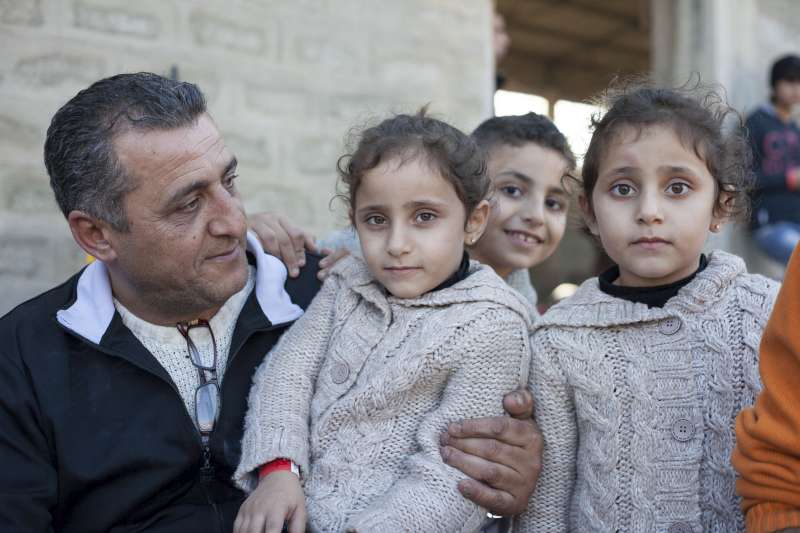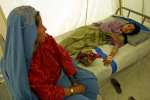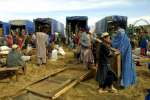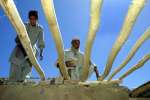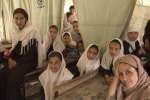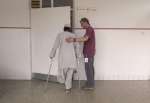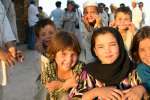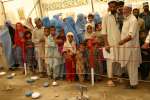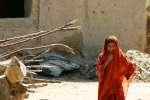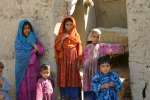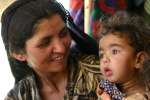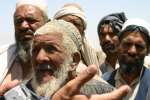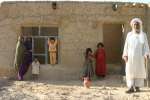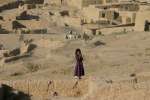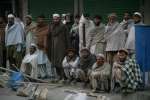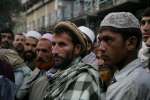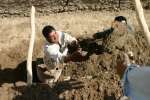- Text size
 |
|  |
|  |
| 
- عربي
Chios: Greek island battles odds to cope with refugee influx
News Stories, 22 December 2015
CHIOS, Greece, Dec 22 (UNHCR) – When Syrian refugee Mohammad Nofal Yassin, first saw the knife he feared he had made a terrible mistake.
Then, he saw the over-crowded dinghy and realised he had been told a lie. His worries increased.
"I was told there would only be 35 people on the dinghy," said Yassin, a 40-year-old baker who had fled with his wife and four children, aged between four and eight, from the Palestinian Yarmouk refugee camp near Damascus. "When I saw more than 60 people, we refused to board."
The crossing had cost him US $3,400, but he was prepared to forgo that money. But all the time there was the knife, prodding him on board.
One of his four-year-old twin daughters cried that she wanted to go home. Meanwhile, his eight-year-old son shouted that he refused to "die on that dinghy".
It was 1:30 am in the morning and they had just come off a three-hour windowless van journey. They were now somewhere near the Turkish town of Çeşme and the people smugglers' overcrowded vessel was waiting.
Yassin also realised, however, that staying was not an option. Behind them lay only misery. There was no 'back'. No home to return to. So they clambered fearfully into the dinghy.
His family had fled a war that had already claimed Mohammad's parents in 2013, when the family home was bombed. The bakery he ran with his older brother had then been bombarded and razed to the ground. Finally, the house of a relative with whom they had sought shelter also came under fire.
The children's forebodings about the dinghy were well founded. Some 50 minutes into the journey, and in the middle of the night, the boat ran out of fuel.
But their luck was in. The Greek coastguard picked them up. Fate then smiled a second time when the rescued family were taken to the island of Chios.
The nearby island of Lesvos has garnered most of the headlines as the destination for most of the thousands of refugees who have crossed the Mediterranean seeking safety this year. The huge influx has created many challenges for that island which has struggled to cope at times.
Chios, similar in size and distance from the Turkish mainland, lies to the south. It may not have attracted the spotlight to the degree that Lesvos has, but it too has been hugely affected by the mass migration of people fleeing wars in the Middle East and beyond.
The local authorities on Chios have gone quietly about the business of receiving refugees in an orderly and planned manner welcomed by UNHCR.
A new registration and reception centre for 1,000 people has been prepared in an old factory outside of Chios town and will be opened shortly. Pending that, a new temporary reception site was opened in mid-November next to the walls of the historic castle near the port.
There, UNHCR, in cooperation with the municipality and others, has set up 34 Refugee Housing Units (RHU) and two tent-like communal halls with heating, providing accommodation for up to 1,000 people.
Joe Kuper, head of UNHCR's field office on Chios, praised local volunteers for doing a "tremendous job" at the old site, but said the new temporary site was better equipped, with medical equipment, showers and children's playgrounds, and is staffed around the clock.
So far, 2015 has seen 113,000 refugees arrive on Chios, with an average of about 700 a day in December.
Officials from the Coast Guard, Frontex, and local police work to register new arrivals 24-hours a day. The influx has also brought together different sectors of the local community, from the municipal authorities, police and coast guard, to volunteers from the University of the Aegean and interpreters provided by MetAction, a UNHCR partner NGO.
"Cooperation between the police and coast guard works well. We plan together, share and find solutions," said Giorgos Amentas, Supervisor of the Aliens Office of Chios Police Department at the registration centre. And with the availability of interpreters, interaction between authorities, the local community and refugees has improved. "Good communication and providing information are the only things that calm refugees," said Amentas.
Some refugees arriving on Chios are processed and moved on to mainland Greece in one day.
The Yassins now hope the worst is behind them and they can finally bid farewell to a war that has made them refugees twice over. Yassin says he will always be thankful to the Greek coastguard.
"They saved us," said Yassin. "They were very polite. We are very grateful."
By Ketty Kehayioylou, Chios, Greece
